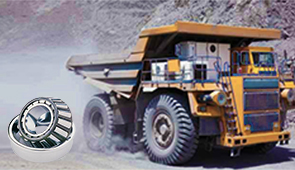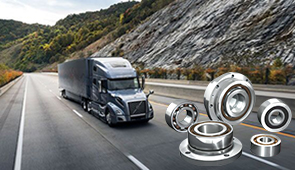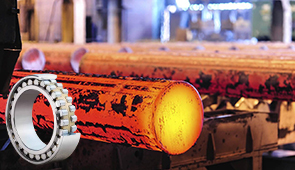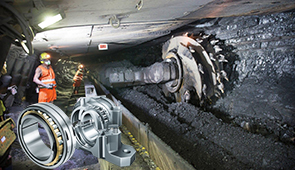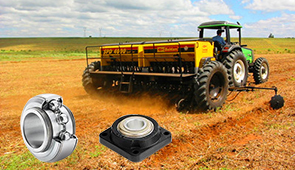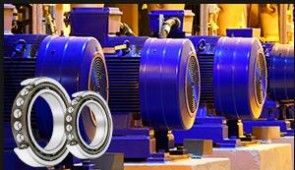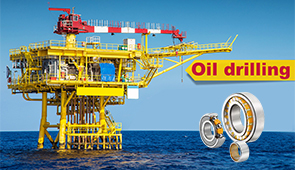When to Use Grease vs Oil: Understanding Lubricants for Metal Repair
Choosing the right lubricant is critical to ensuring the longevity and optimal performance of metal components, whether in industrial machinery, automotive systems, or household equipment. While both grease and oil are essential for reducing friction, preventing wear, and enhancing efficiency, their applications differ significantly depending on the conditions and requirements of the repair. This article dives into the technical distinctions between grease and oil, exploring when and why each should be used. By understanding the properties and advantages of these two common lubricants, you’ll be equipped to make informed decisions and achieve better results in your metal repair tasks.
Fundamental Differences Between Grease and Oil
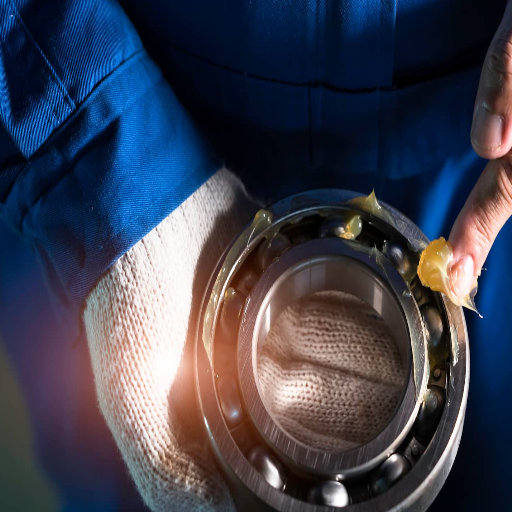
Composition and Texture
Both grease and oils work as lubricants, but their peculiar compositions dictate the textures to satisfy special applications. Grease is often made of a base oil along with a thickener and other additive packages for enhancing performance. The thickening agent, usually metallic soaps or other complex compounds, provides grease with a semi-solid property so that it sticks to a surface while still offering unparalleled lubrication over a period, especially where environmental factors tend to lessen maintenance frequency.
Contrarily, oil is more viscous by being a thin liquid lubricant formed chiefly of a base oil with one or more additive packages for achieving better performance. The lack of a thickener gives the substances a liquid-like state, so they flow freely. Hence, oil is suited for application in high-speed machinery where continuous lubrication is paramount, as also heat must be dissipated without it.
Grease and oil differ in their constitution and properties, a factor that careful consideration may have to underlie the choice between one or the other. Grease tends to be useful where the lubricant is expected to stay put under its own weight or while under pressure, such as the case with joints, bearings, seals, and the like. Oil is rather dynamic, suited for systems such as engines or turbines where fast movement and quick lubrication are vital to proper working capacity. Catching such differences guarantees the right type of lubricant to be put into the project with the aim of enhancing the processes and life.
Functionality in Various Environments
Lubricants are subject to varying performance demands, depending on the environmental conditions in which they are used. For instance, hot environments may pose a challenge to the thermal stability of lubricants. Typically, oils with higher viscosity indices or those based on synthetic base stocks perform well under such conditions in considering the importance of maintaining stability of properties with extreme heat. For grease, the addition of high-temperature thickeners such as lithium complex or polyurea ensures a long life with consistent performance.
Cold weather poses an entirely different challenge, for low temperatures can spur mechanism lubricant to thicken or solidify. Lubricants designed for such purposes contain low-viscosity formulations and pour point depressants to ensure they remain fluid and perform correct lubrication even in sub-zero temperatures. In such cases, synthetic oils are often desirable from their rating for flow at low temperatures far beyond that of conventional mineral oils.
Such environments that need water resistance and anti-corrosion are considered moisture-rich or marine. Greases with calcium sulfonate or aluminum complex thickeners would be very good at resisting washout and preventing oxidation. Similarly, oils used in high-humidity situations will often have anti-corrosion additives to protect metal surfaces from rust and degradation. By preparing the environment with appropriate lubricants, the machinery and systems may be able to carry on with their efficiency through various working conditions.
Comparative Analysis of Grease vs Oil
Grease and oil are the two most fundamental examples that differ in their state of matter and applications. Greases are a kind of semi-solid lubricant composed of base oil, a thickener, and sometimes additives. They are used where equipment requires long-term lubrication without reapplication. The grease has high adhesion to be useful for slow-moving or heavily loaded parts where it must remain in place for characterized periods. This property is disinfectant to grease in cases of high contamination or where a grease seal is required to hold out debris.
Oil is a liquid lubricant, with qualities appealing to applications where dissipation of heat, cleanliness, and good lubrication of components at high speeds are priorities. Oils freely flow to places where the grease cannot reach, by ensuring the cooling and friction reduction under continuously moving conditions. Engineering-wise, oils find application for general lubrication, in engines, turbines, or hydraulic systems, as the best choice to circulate and thus to redistribute heat and contaminants.
The decision is at last governed by the on-demand parameters of the machinery. Grease is meant for situations demanding stability and adhesion to give long-term performance, while oil would fit applications stressing speed, heat dissipation, and exactness. When correctly accepted and applied, both lubricants go a long way in optimizing system loot and abating wear, hence giving mechanical components a longer life under varying operational conditions.
Specific Applications of Grease and Oil
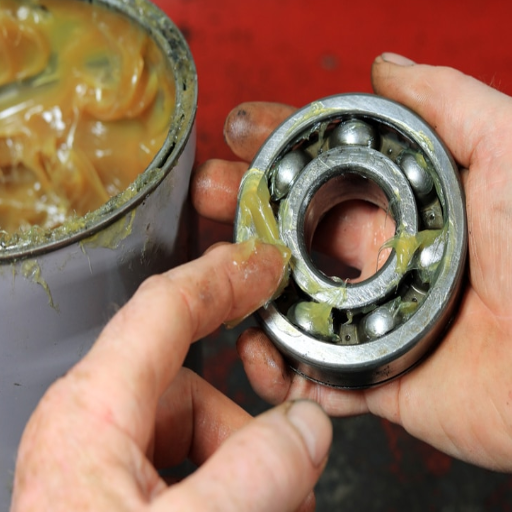
Ideal Scenarios for Using Grease
The grease is mainly desirable in those applications where the lubrication point is almost inaccessible or should be lubricated continuously, but practically cannot be. These include machinery functioning in hazardous areas or sealed-for-life units like sealed bearings for electric motors or conveyor systems. Grease has a semi-solid nature that retains it for longer and consequently reduces the frequency of service. Under the contamination of dust, water, or corrosive materials, grease gives excellent protection, as its thick consistency acts as a barrier against these external materials. For this reason, grease finds primary applications in areas of mining, construction, and marine operations.
Grease plays a life-dependent role under heavy-load and shock-load conditions. High-pressure or continuous-impact machinery, such as industrial presses and earthmoving equipment, must have enhanced load carrying by grease. It uses its thixotropic behavior to stay stable under heavy-stress conditions, which ensures lubrication continues with time. Furthermore, grease finds a perfect place in devices that function under extreme conditions, like very high temperatures or very low temperatures, because it can be designed to perform well under alternating temperatures by correctly choosing additives and thickeners suitable for such situations.
The grease can be an adequate solution for situations that require permanent lubrication, and additionally reduce noise and vibration. Mechanical assemblies such as gears, hinges, and joints from automotive or household appliances benefit from the damping characteristics of grease. It reduces metal-to-metal contact and absorbs vibrations of the grease, ensuring quieter operation and comfortable use. For the suitable performance and durability of equipment in various conditions, selecting the right grease according to viscosity, base oil type, and thickener choice is important. They are a multipurpose product and essential for grease to keep mechanical efficiency in the best condition.
When Oil Excels in Reducing Friction
Oils are competent friction reducers and hence great lubricants, especially in dynamic systems where continuous motion and high-speed operation are involved. The oil film is absent on the surfaces; this causes metal-to-metal contact, resulting in a wear situation. This is typical in automotive machinery, turbines, and hydraulic systems, where accurate lubrication is a must for operational efficiency and durability.
The lower viscosity oil is best used in applications wherein speed of circulation is needed, whilst the higher viscosity grade oil is applied in an environment where load-presentation capacity is necessary. In the meantime, the use of a more advanced additive can help to improve the effectiveness of lubrication by means of protection against wear and corrosion, including thermal stability, among others, memories of performance under extreme conditions, namely, high temperatures and pressures.
Apart from this, oil, by way of its thermal conductivity, also helps dissipate the heat generated from the friction, relieving the equipment from thermal loading and thermal degradation. With such multifarious attributes, the oil becomes indispensable in the reduction of friction and maintaining the operational integrity of high-performance machinery. The correct type of oil applied in the right way enhances mechanical efficiency and extends the service life of important components.
Grease vs Oil in Different Industries
|
Industry |
Grease |
Oil |
Key Points |
|---|---|---|---|
|
Automotive |
Bearings, seals |
Engines, transmissions |
Pressure, heat |
|
Construction |
Heavy loads, shocks |
Hydraulic systems |
Load, flow |
|
Marine |
Water resistance |
Cooling, lubrication |
Water, cooling |
|
Aerospace |
High pressure, seals |
High-temp systems |
Pressure, temp |
|
Farming |
Irregular use, seals |
Continuous lubrication |
Irregular, flow |
|
Firearms |
Hinges, metal contact |
Not preferred |
Contact, durability |
|
Steel Milling |
High loads, shocks |
Heat dissipation |
Load, heat |
|
Mining |
Seals, heavy loads |
Cooling, flow |
Seals, cooling |
Advantages and Disadvantages of Each Lubricant

Benefits of Using Grease
The very composition and properties of grease give it many virtues for industrial and mechanical usage. Here are five that stand out:
- Enhanced Lubrication Retention: It stays put better than oil, even in tough conditions like high load or vertical applications. Its semi-solid nature may provide a prolonged lubrication period, depending upon how often it is re-lubricated less frequently and, hence, increases equipment life. Or, for instance, from steel milling down to mining, grease retains quality even when high pressure or shocks are applied. This is in contrast to oil, which shows poor retention.
- Water Resistance: This property makes it highly resistant to water washout, and it is especially used in applications exposed to moisture or direct water contact, such as in marine systems and farming equipment. Studies show that water-resistant grease can reduce corrosion-related maintenance by 40%.
- Sealant Properties: Grease acts as a secondary sealant against dust, dirt, and water entering the machinery components. This is the best benefit in mining or industrial settings where equipment works in dusty or harsh conditions. Studies show a 30% reduction in machinery failures from particulate contamination when grease is used satisfactorily.
- Temperature Stability: High-temperature grease formulations are used under extreme heat scenarios and find applications in aerospace and automotive industries. For instance, Aerospace-grade greases could function efficiently beyond 550°F (288°C), maintaining good viscosity and lubrication, thus preventing degradation of components due to thermal stress.
- Shock-Load Protection: Grease acts like a cushion against heavy intermittent loads or shocks, clinging to metal surfaces and not getting displaced. It is capable of distributing pressure evenly on components, thus minimizing wear and enhancing operational stability. This property finds importance in steel milling and allied industries, wherein shock loads are common, reducing mechanical downtime by up to 25%.
The above-mentioned benefits make grease an all-terrain and trustworthy application in various demanding industrial settings, and are what secures its position as a lubricant of all trades for challenging conditions.
Drawbacks of Oil Usage
Despite the widespread use of oil as a lubricant in industrial applications, its effectiveness is limited under certain situations because of several inherent drawbacks. From the point of view of being one of the most important conditions, it has been seen that oil offers a low viscosity index when compared with greases and thus is unable to maintain a lubrication film under conditions when temperature is varying. In operation under very high temperatures, oil gets thinned out to reduce the effect of lubrication; hence, an increase in friction would result, thus the wear of the machine components would increase, and in turn, the system would face a greater risk of failure under conditions demanding thermal stability.
Another limitation is that it can leak out, causing contamination during its course of use. Being a fluid-type material with low viscosity, the oil could seep out through the seals or tiny gaps in the machinery system, especially under high pressures or in the event of mechanical vibrations. Oil leakage, therefore, not only contributes to the lack of lubricant availability for its designated purpose but also contaminates the environment, which brings about an issue of non-compliance with environmental protection legislations. Moreover, the leaked oil presents potential hazards in the working environment, such as slip risks and fire risks, and in turn calls for more expenses for cleaning and preventive measures.
And in the end, because of the requirement for more frequent monitoring and maintenance, the operational complexity and cost of oil-lubricated systems increase. This could point towards regular oil changes and topping up to ensure proper operations, thereby resulting in more downtime. Besides, advanced equipment such as filtration systems is usually employed to enhance oil quality and remove contaminations or particles, which, in turn, increases the upfront and operational costs. Such challenges render oil doubtful for application in those industries where reliability, longevity, and environmental issues are the paramount factors, thus creating an even stronger reason for the search for an alternative or complementary lubrication technology in the most demanding applications.
Maintenance Requirements for Grease and Oil
Grease and oil lubrication systems require different modes of maintenance given their respective physical characteristics and operational qualities. While being semi-solid in nature, grease is generally not reapplied as often since the viscosity also aids in the lubricant’s retention against seepage into other areas. Grease application needs to be closely monitored to prevent over-greasing, as this might cause excessive heat buildup, cause seal distortion, and lead to contamination. Hence, occasional inspections of grease points and the actual use of calibrated dispensing equipment to avoid excessive or insufficient quantities should be done.
When it comes to oil lubrication, maintenance practices become more demanding, wherein frequent sampling and analysis serve to ascertain quality degradation, oxidation, and contamination by dirt or metal particles. Filtration might be of paramount importance for keeping the oil clean, but it has to be cleaned or have its filtering elements replaced regularly to keep up with its job. More frequent checks for oil levels are also required in order to prevent lubrication starvation. Starvation would otherwise stimulate acute mechanical wear, accompanied by failures in the very system being lubricated. The increased use of condition-monitoring techniques such as vibration analysis and infrared thermography has advanced the precision of oil maintenance, allowing for predictive maintenance and the reduction of unplanned shutdowns.
Both grease and oil maintenance programs should adhere to specifications while taking into account environmental conditions in order to optimize performance and ensure the mechanical equipment’s life function. Increasingly, the use of automatic lubrication systems coupled with IoT-enabled sensors is becoming mainstream, whereby real-time monitoring and adjustments reduce human error and boost overall operational efficiency.
Avoiding Common Mistakes in Lubrication
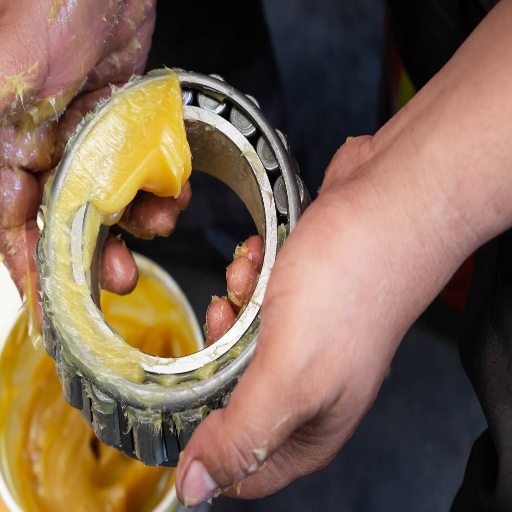
Over-Greasing and Its Consequences
Greasing is an overdone but preventable maintenance activity. Technically speaking, the over-application of lubricant elevates the operating temperature because pressure build-up and shear development take place inside the bearing housing. The heat thus generated accelerates the aging process of the grease, which means that it quickly loses its ability to lubricate, thus creating mechanical failure. From the standpoint of over-greasing, grease can get into undesired places and cause contamination of components or surroundings, leading to expensive cleanup operations and a great loss in efficiency.
Following the manufacturer’s instructions for quantity and intervals, I apply the grease and reapply after set intervals. The over-greasing is typically carried out by maintenance personnel who work without guidelines or standards. Using precision dispensing systems or automated lubrication technologies should sort out over-greasing, as these dispense the exact amount of grease required. I do regular assessments of bearing conditions and maintain lubrication records to track down any discrepancies and address them in practice.
Technicians should be trained and provided with tools that will help them in identifying specific requirements for each machine. An ultrasonic device that determines that a bearing is sufficiently lubricated can help to improve this further. But, through a system approach of managing lubrication, the life of any machine shall become more reliable and longer.
Using Incorrect Viscosity Oil
Using incorrect viscosity oil is a critical factor in determining whether there will be any drastic impact on machine performance and reliability. Viscosity refers to an oil’s resistance to flowing and must, therefore, meet the specific requirements arising from a machine’s particular working conditions; otherwise, the machine shall not function properly. If the viscosity is high, increased friction and resistance in the system can cause overheating, inefficiency, and wear of components at a faster pace. If the viscosity is low, the oil skim may not be thick enough to prevent metal-to-metal contact, thus causing more wear, scoring, and finally, equipment failure.
Running any equipment through extremes of temperature puts a premium on the right viscosity selection. Hence, at high temperatures, an oil with its viscosity index not appropriate for the task at hand thins out too much to act protectively; whereas, at low temperatures, an oil of high viscosity resists flow, resulting in impeded circulation. The realization and observance of the manufacturer’s instructions, along with the load characteristics and, primarily, the use of oils with a high viscosity index under variable conditions, is essential to tackle these problems.
With the advancement of oil formulation and of monitoring technologies, such as viscosity sensors attached to the machinery or more advanced software analytic methods, technicians can now watch oil performance in real-time and react to change ahead of time, hence stopping minor problems from escalating into major failures. By following proper viscosity specifications as well as data-based maintenance applications, organizations can have equipment running strong for a long time and running efficiently.
Best Practices for Applying Lubricants
Lubrication is the backbone of equipment reliability, making it necessary to be applied effectively to avoid machinery downtime. This systematic method involves the selection of the correct grease or oil grade and type based on operating conditions and specifications of the equipment. Usually, equipment manufacturers provide detailed recommendations on the ideal viscosity, chemical composition, and additives for achieving optimum output.
The application area is supposed to be thoroughly cleaned to prevent contaminants from getting into the lubricant that could contribute to premature wear or failure. When greasing, the volume dispensed should be as per tolerance levels; over-greasing may trigger overheating and seal damage, while under-greasing may not allow enough lubrication.
With the advent of modern technology and automated lubrication systems, lubricants can be distributed with greater precision and regularity with minimum human error. These automated systems are equipped with sensors to measure temperatures, pressures, levels of lubricants, and other variables, making adjustments with optimization in mind. The quickest route to increasing effectiveness and cutting down on lubricant waste is by having a set lubrication schedule in conjunction with condition monitoring.
Equally important is to store the lubricants in controlled conditions. Exposure to extremes of temperature, moisture, or any other contaminants till use will bring about degradation of their properties, which would affect their performance. Adopting these best practices can make equipment reliable and reduce operational disarray due to unscheduled maintenance.
The Impact of Proper Lubrication on Machinery Performance
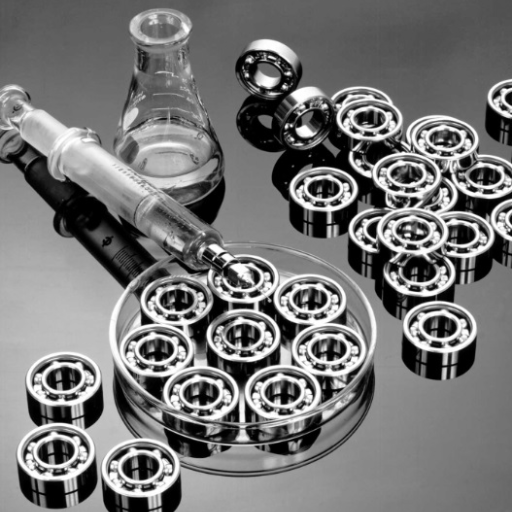
Reducing Wear and Tear
Proper lubrication is essential to reduce wear and tear in machinery components. When an ample and continuous oil film separates any two rubbing surfaces, friction is greatly diminished, so the working surface is never allowed to be degraded and can spend more time in service. For example, research indicates that 70% of failures are caused by improper lubrication, underscoring the need for the right type of lubricant, viscosity, and application methods. Industry standards such as those developed by the American Society of Lubrication Engineers (ASLE) require an extensive analysis of the operating environment to arrive at the best choice of lubricants for given mechanical requirements.
Alternatively, the optimization of lubrication processes can enhance operational performance. They are automated lubrication systems that measure an exact amount of lubricant and deliver it at set intervals of time, thus avoiding under-lubrication or over-lubrication situations. Under-lubrication lets the metals slide against each other, while over-lubrication causes the lubricant to lose too much heat and energy. To further increase the lubrication efficiency, these automated systems use monitoring systems that feed back real-time data on lubrication performance, facilitating predictive maintenance that prevents wear from progressing into actual mechanical damage.
Equally, to reduce wear and tear, it is important to understand environmental factors that affect lubrication. Any of these can get in the way of the life of a lubricant and its ability: Working temperature, e.g., higher temperatures can cause lubricant oxidation and subsequently will reduce its ability to protect the machine gradually; dust, humidity, and load conditions. Dust and water, in particular, form an abrasive or corrosive mixture that will accelerate component wear. To work against such threats, sealed types of lubricating mechanisms should, wherever possible, be employed, and samples of lubricants should be routinely analyzed for contamination. Optimally, this ensures that machinery performance is at its peak with greater reliability over long operation cycles.
Minimizing Downtime
Each of such systems and operations has its costs, manifested mainly as lost productivity or frozen workflows. The stoppage time can have a cascading effect on the organization’s operations. Organizations today must adopt a proactive maintenance strategy to continuously ensure equipment reliability via predictive and preventive measures. Predictive maintenance uses data-driven knowledge derived from industrial sensor data gathered for the health monitoring of machinery in a real-time environment. Hence, one can identify potential issues well ahead of actual failure occurrence. Conversely, preventive maintenance involves periodic checks and replacement of components to minimize the chance of sudden breakdowns.
Equipped with the best monitoring systems, downtime can be avoided. So, they feed better intelligence to the decision-makers. For example, vibration analysis or thermal imaging can spot unusual behavior in machinery, whereas AI-based algorithms can predict failures with a high degree of accuracy. Hence, moving towards condition-based maintenance will significantly increase machine uptime and also optimize maintenance activities, thus giving organizations a more cost-effective way of resource allocation.
Moreover, a robust operator training program and standardized operating procedures can put measures in place to eliminate human factors causing downtime. Training personnel on the correct handling of equipment, as well as issues that might, in their early stages, cause a malfunction, will protect organizations against human errors. This approach extends to the preparation of incident reports, sharing them with operational staff regularly, thereby steadily tackling interruptions. This is how the latest technologies, combined with the culture of operational excellence, will pave the way for continuous uptime performance and resilience in operating businesses.
Frequently Asked Questions (FAQs)
Q: When should I use grease instead of oil?
A: Grease is often used for applications where a thicker lubricant is needed to stay in place, particularly in moving parts like bearings and chains. It is ideal when there is a risk of harmful contaminants, as its tacky nature helps it adhere to surfaces and prevent debris from entering.
Q: What is the difference between grease and oil?
A: The primary difference between grease and oil lies in their composition and consistency. Grease is a thick, semi-solid lubricant that can pack it full in spaces like bearing housings, while oil is a liquid lubricant that spreads easily over surfaces. The choice between them often depends on the specific needs of the application.
Q: Can I use oil on things that typically require grease?
A: While oil can be used in some scenarios meant for grease, it may not provide the same level of lubrication for long-lasting applications. Grease’s thicker consistency helps it stay in place, making it better for high-load situations or where equipment is exposed to elements.
Q: What types of grease are available for different applications?
A: There are different types of grease available, including lithium-based, synthetic grease, and silicone grease. Each type is formulated for specific applications, such as high-temperature environments, moisture resistance, or compatibility with certain materials, which influences when to use grease vs oil.
Q: How do I know if I need to use oil or grease for my equipment?
A: Consider the operational environment and the requirements of your equipment. For example, engine oil is used for lubrication in engines where oil can circulate freely, while grease is preferred for sealed bearings and areas where lubrication needs to stay in place.
Q: Is it harmful to mix grease and oil?
A: Mixing grease and oil can lead to problematic situations, especially if they are not compatible. It may cause the lubricant to lose its effectiveness, leading to metal-to-metal contact and potential equipment failure. Always check compatibility before mixing.
Q: How does grease perform in extreme conditions?
A: Grease generally performs better in extreme conditions, as its thicker consistency allows it to resist separation and stay put under high loads, unlike thinner oils, which may flow away. This is especially important in areas such as bearings and shafts where lubrication is critical.
Q: Can I use bearing grease for my brake system?
A: It is not recommended to use bearing grease in brake systems. Brake components require specific lubricants designed to handle high temperatures and friction. Using the wrong type can cause issues, so always refer to the manufacturer’s recommendations.
Q: How often should I lubricate using grease or oil?
A: The frequency of lubrication depends on the application, environmental conditions, and manufacturer guidelines. Generally, grease may need to be reapplied less frequently than oil since it tends to stay in place better. Regular inspection can help determine when to use grease vs oil effectively.
UCTH213-40J-300 with Setscrew(inch)
CNSORDERNO: Normal-duty(2)
TOGN: UCTH213-40J-300
SDI: B-R1/8
SD: 2 1/2
UCTH212-39J-300 with Setscrew(inch)
CNSORDERNO: Normal-duty(2)
TOGN: UCTH212-39J-300
SDI: B-R1/8
SD: 2 7/16
UCTH212-38J-300 with Setscrew(inch)
CNSORDERNO: Normal-duty(2)
TOGN: UCTH212-38J-300
SDI: B-R1/8
SD: 2 3/8
UCTH212-36J-300 with Setscrew(inch)
CNSORDERNO: Normal-duty(2)
TOGN: UCTH212-36J-300
SDI: B-R1/8
SD: 2 1/4
UCTH211-35J-300 with Setscrew(inch)
CNSORDERNO: Normal-duty(2)
TOGN: UCTH211-35J-300
SDI: B-R1/8
SD: 2 3/16
UCTH211-34J-300 with Setscrew(inch)
CNSORDERNO: Normal-duty(2)
TOGN: UCTH211-34J-300
SDI: B-R1/8
SD: 2 1/8









